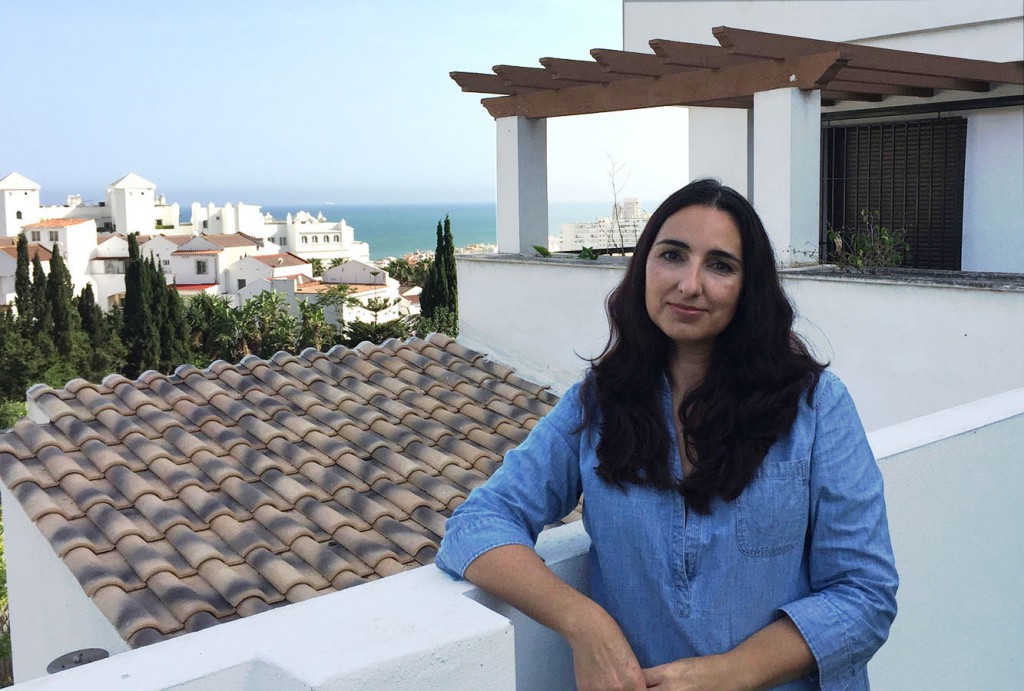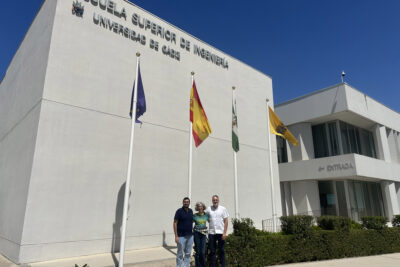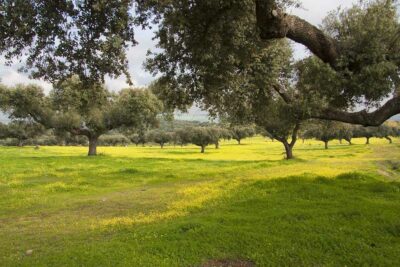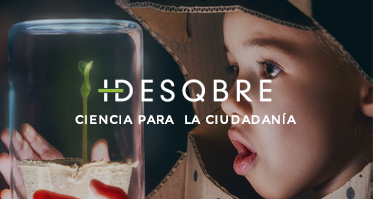Development of a 3D titanium-based structure to improve bone implants
A research team from the University of Malaga creates a new model of prosthesis, coated with branching macromolecules which is more compatible with the body and more durable. Experimental results suggest the novel prosthetic surface may considerably improve the existing prosthesis, making them adhere better and be more resistant.
A research team from the University of Malaga, the Andalusian Centre for Nanomedicine and Biotechnology-BIONAND, the Canary Islands Technological Institute, the company Osteobionix, and the CIBER (Networking Centre for Biomedical Research) has developed a coating for titanium prostheses based on 3D branching polymers which can incorporate substances that facilitate bonding with the bone. This mechanism facilitates bone cell recognition of the implant, thus improving osseointegration and preventing both rejection and wear of the bone mass and the implant itself.

The titanium implant is coated with a three-dimensional branching nanostructure which carries substances that facilitate the formation of new tissue.
The result is a titanium implant coated with a three-dimensional branching nanostructure, called dendrimer, which acts as a bridge between the titanium and the bone and which also carries substances that facilitate the formation of new tissue onto the prosthesis surface. This ensures that the healthy component binds to the prosthesis making the fixation occur in a natural way, more stable and longer lasting than in the current ones.
The method proposed by the researchers in the article ‘Dendritic Scaffold onto Titanium Implants. A Versatile Strategy Increasing Biocompatibility’, published in the journal Polymers, confers specific features to the implants, since they have a more homogeneous structure with greater integrity, which causes less wear. It also offers the possibility of controlling its composition for the administration of specific drugs in order to avoid rejections and infections.
Specifically, the experts included fragments of proteins that the body produces naturally, known as fibronectins, which encourage the binding of bone cells to the implant. These molecules cause the cells to grow and proliferate, resulting in greater acceptance of the external element. Leonor Santos-Ruiz, a researcher at the University of Malaga and one of the authors of the article, declared to Fundación Descubre: ‘The integrins of the cells function as perfect hooks that attach themselves to the fibronectin fragments introduced into the dendrimer structure, achieving a robust integration between the implant and the organism.’
In this way, each branch of the scaffold becomes attached to the bone with these hooks, thereby anchoring the implant and assisting the connections to occur naturally thanks to the integration of the metal with the living tissue. ‘These unique properties make dendrimeric systems suitable for a wide variety of applications in regenerative medicine,’ added the researcher.
Thus, in addition to fibronectins, other substances could be incorporated, such as anti-inflammatory substances, which favour tissue recovery after the installation of the prosthesis, or antibiotics, to avoid frequent problems in current implants, such as bacterial infections.
Implants turned into bone
The problems resulting from replacements with metal material are usually due to overloading, which can lead to the loss of healthy bone, wear and tear of the implant itself, or a poor bone-implant interaction that results in rejection or infection.
The experts are already working to confirm the suitability of its use in patients such as has been demonstrated in the laboratory. In addition, they consider it a viable and applicable option for dental implants, and for full jaw, hip or knee prostheses. ‘The latter currently have a working life of about 10 years. With this new structure the duration would be longer,’ concluded the researcher.
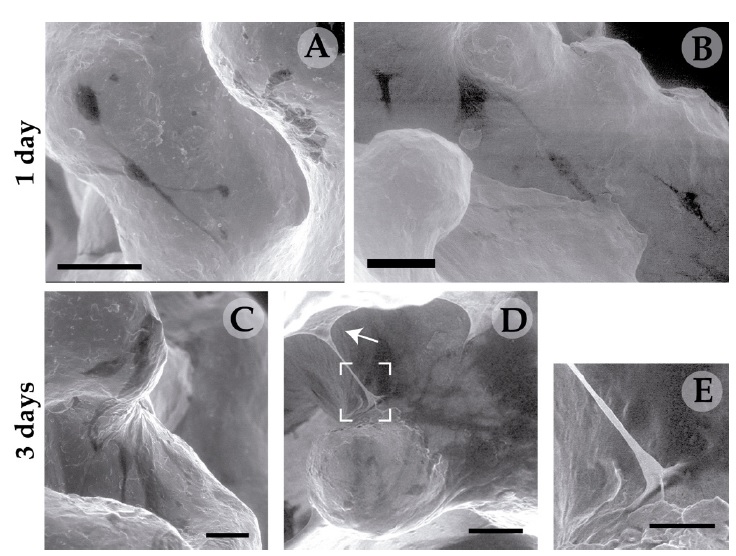
Electron microscopy of human osteoblastic cells with titanium disks and coated by the structure 1 and 3 days after the implant.
The work of these experts modified the surfaces of the dendrimers with the fragment of fibronectin known as ‘RGD domain’, which consists of only three amino acids (arginine, glycine, and aspartate) that serve as an anchor for the cell membrane receptors called integrins. These receptors transmit to the cells numerous crucial signals about the surrounding environment and determine whether or not the cell can adhere to a particular material.
The metals, polymers and synthetic products used to make today’s prostheses lack the RGD domain, since they are not biological materials, and therefore it is difficult for the cells to recognize them. When the metal is coated with a dendrimer bearing the RGD domain, the cell finds an anchor point in that metal and binds to it naturally. This composition has therefore favoured and improved cellular adhesion to titanium surfaces, which increases its biocompatibility, that is, its ability to be accepted by the organism. By doing so, the dendrimer is fixed to the bone, which interprets it as a part of itself and not as something alien, and both the implant and the place where it is installed are able to speak the same ‘biological language’ and there is no rejection.
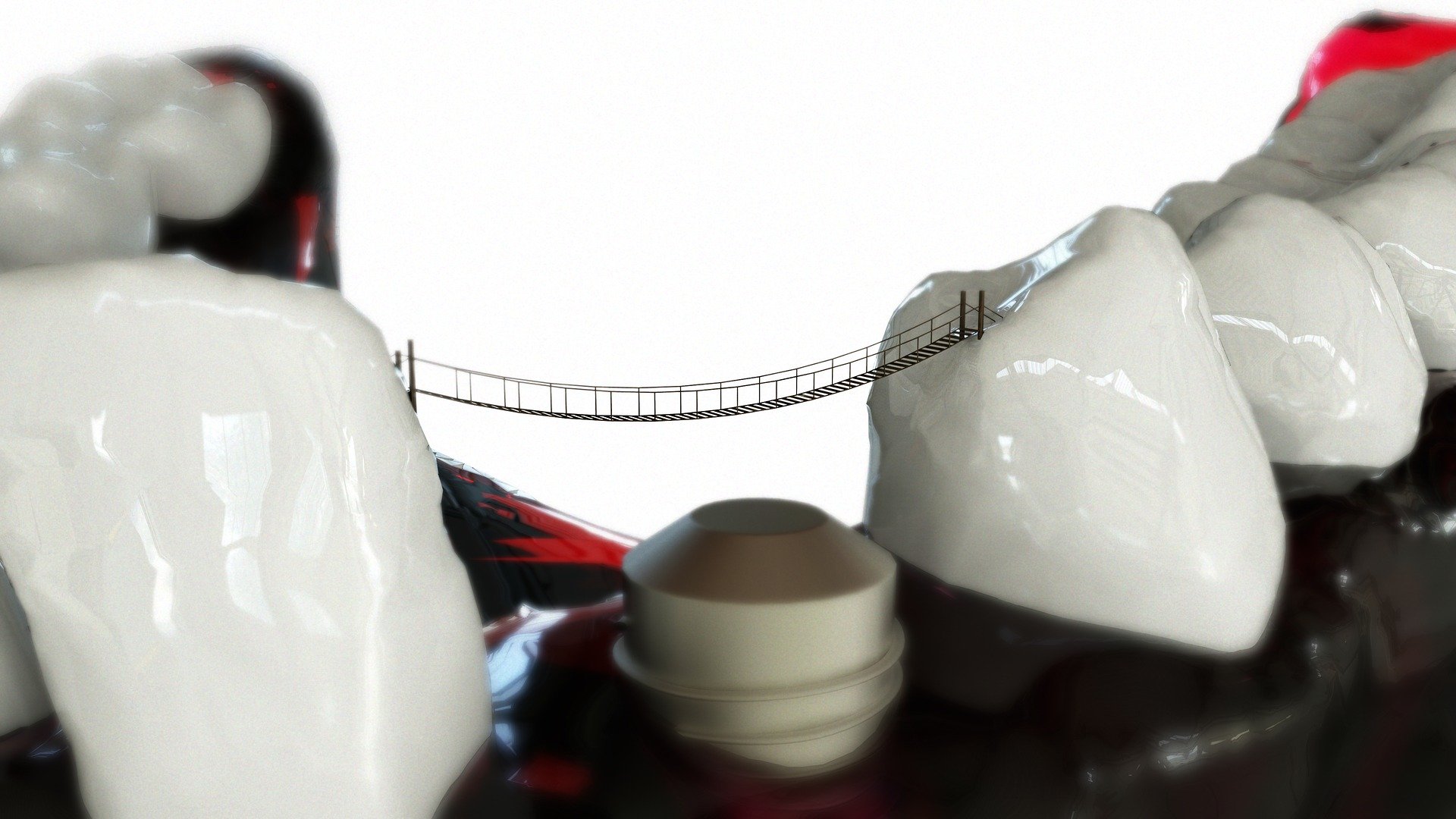
Old and new implants. The experts consider the new system a viable and applicable option for dental implants, and for full jaw, hip or knee prostheses.
This work was supported through the Spanish Ministry of Science and Innovation projects ‘New dendrimers and fluorescence markers for biomedical applications’ and ‘Customized bioengineered porous titanium implants for maxillofacial reconstructive surgery. Proof of concept and preclinical testing’, and through the Regional Government of Andalusia’s Department of Health and Families projects ‘Development of New Nanobiosensors for the Diagnosis of Adverse Drug Reactions’ and ‘Repair and Regeneration of Mandibular Segmental Bone Defects. Preclinical Model Based on Tissue Engineering’.
References
Noemí Molina, Ana González, Donato Monopoli, Belinda Mentado, José Becerra, Leonor Santos-Ruiz, Yolanda Vida y Ezequiel Pérez-Inestrosa. ‘Dendritic scaffold onto titanium implants. A versatile strategy increasing biocompatibility’. Polymers. 2020.
Más información:
#CienciaDirecta, agencia de noticias de ciencia andaluza, financiada por la Consejería de Economía, Conocimiento, Empresas y Universidad de la Junta de Andalucía.
Teléfono: 954 232 349
Additional documentation
Leonor Santos-Ruiz, researcher
Electron microscopy of human osteoblastic cells with titanium disks
Últimas publicaciones
Un equipo de investigación de la Universidad de Cádiz ha creado REDIBAGG, un método que acelera el entrenamiento de modelos de inteligencia artificial hasta un 70%, al utilizar menos datos pero sin perder precisión. La técnica tiene potencial para analizar grandes volúmenes de información en campos tan diversos como la medicina, la industria o las finanzas.
Sigue leyendoUn equipo de la Universidad de Córdoba en colaboración con otras entidades y equipos de investigación de España y Portugal, desarrolla un nuevo método que permite evaluar de manera sencilla el estado de calidad de las dehesas en función de una serie de buenas prácticas relacionadas con la biodiversidad, la productividad de los pastos o el manejo de la arboleda.
Sigue leyendoEl ayuno intermitente en días alternos no solo ayuda a adelgazar: un estudio de IBIMA demuestra que este patrón alimentario, al remodelar la microbiota intestinal y frenar la inflamación sistémica, mejora de forma significativa la memoria, la atención y el control inhibitorio en adultos con obesidad. La investigación allana el camino hacia una “nutrición de precisión para el cerebro”.
Sigue leyendo